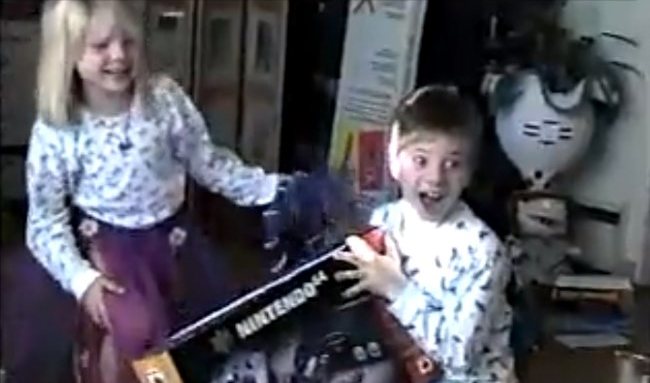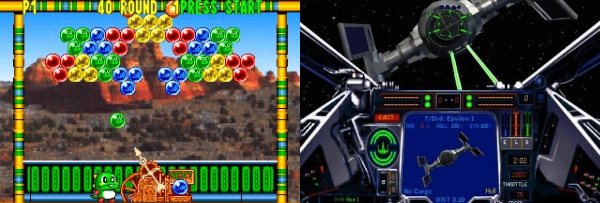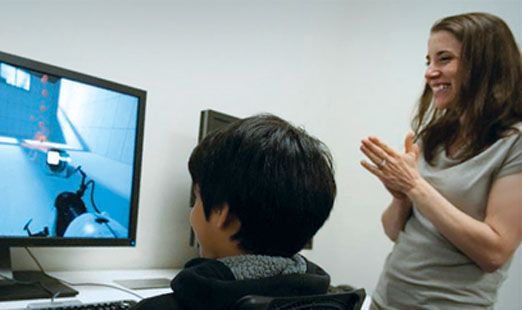The Importance of Inspiring Tomorrow’s Game Makers

If you’re reading this, chances are you’ve had that Christmas morning moment. Unwrapped presents jumbled in a pile, wrapping paper strewn everywhere – and then you spot that last package in the corner, so small you almost missed it. Your tiny heart starts beating faster as anticipation courses through your body, and you rip open the box to find – yes! That game that you’ve been pining for, the one you never thought they’d get you! And you race off to start playing as quickly as possible for as long as you can until you get yelled at to come to dinner.
For me, it was Donkey Kong Country (and it was a Hanukkah evening, but you get the idea). For many, it was Mario or Zelda or Sonic. That moment of finally obtaining and experiencing a game I had heard so much about multiplied the sense of wonder and joy that kids can so readily experience from games. Ultimately, barreling through Nintendo’s elegantly-crafted sidescroller in such a fit of enthusiasm was a significant step in inspiring me to enter the games industry. But in an age of Youtube playthroughs, free-to-play titles and virality-oriented social games, will the next generation be able to share these formative moments? Can you really unwrap Angry Birds on Christmas morning?
Because while Tetris, Q*bert, Bust-a-Move, Zuma and Peggle are all fantastic games, I have yet to come across a developer who cites any of them as their reason for wanting to get into the industry (Not to say they don’t exist – if this is you, I’d love to hear your story in the comments below). In my experience, it’s been narrative-based games like Atari’s Adventure, Metal Gear, X-Wing and Prince of Persia that have left deep impressions of wonder and majesty on young minds, with promises of unbelievable adventures to come if only they could figure out how to make these things, too.

The argument could be made that the rush to adopt free-to-play models has damaged the level of wonder games can impart. Because with that low barrier to entry comes a deceptive price – an equally low barrier to exit. And here, more and more developers are faced with the dilemma of the time: Do you focus on designing your game to organically support microtransactions and support the health of your game and studio, or do you take pains to envelop the player in a sense of awe and delight to keep them playing, at the expense of a more sustainable business model?
“That’s a false choice – you can do both!” you might say, but the back alleys of the App store are littered with bootstrapped developers who learned first-hand how hard it is to create a fun game, let alone one that has fun mechanics and seamless microtransactions and that can compete with established players’ marketing dollars and reputations.

In this respect, making games actually is about more than just turning a profit. Games like Skylanders may engage kids’ hand-eye coordination and sense of wonder (or at least as long as their parents keep buying new Skylanders figures), but pale in comparison to the sheer creativity unleashed by Minecraft, especially in a directed educational setting. The same goes for Teach with Portals, Valve’s re-purposing of their celebrated series as a means to teach kids physics, math, and of course, game design. If you thought playing The Oregon Trail, Where in the World Is Carmen Sandiego? or Word Munchers in school was fun, these games would blow your little mind just thinking of the possibilities. Who wouldn’t be inspired?
Like it or not, this is a responsibility we have to future generations, and it’s a choice we should constantly be weighing. Do we invest in their potential to improve upon what we leave behind, or do we come up with more ways to get a nickel out of them every ten minutes?
The next generations of game-making tools will be unlike anything we’ve ever seen. We’ll have wearable companion computers ala Google Glass, true virtual reality systems, Turing test-quality AI interactions, and other technologies we can’t even begin to imagine. Are we ready to empower the developers of the future with the creativity to get the most out of these platforms?
Let’s give the generations to come something beyond anyone’s wildest dreams. Let’s give these kids the Christmas morning of their lives.
